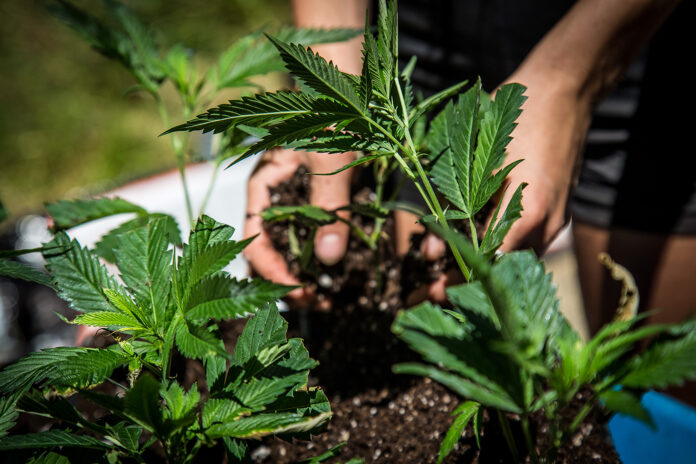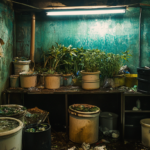The term “cannabis cultivation” conjures images of patches of pot growing in fields that can be seen only from the air. Legalization in many states means this perception is a thing of the past. Commercial cannabis farming is just like farming any other crop. And as with any other agricultural product, certain basics need to be in place for a commercial operation to flourish.
If you’re new to the farming business, you’ll need a business plan. Farming requires planning to make sure financing and other elements including fixed and operational costs, marketing, and human resources are considered.
With cannabis, however, additional considerations enter the picture: state regulations and laws, licensing restrictions, product testing and traceability, in-depth employee training, security for the product and the waste, waste management and removal, and other logistics like packaging and transportation.
Any plans to go organic add another layer of complexity, including soil and water testing, fertilizer use, and the equipment necessary to accomplish everything without chemicals.
Location, location, location
Farming almost any crop requires one to consider location, for several reasons.
Outdoor growing simply is not practical in some areas. Some are too hot; others are too cold. Cannabis is fussy enough to need a fairly consistent, warm temperature to yield maximum growth. In addition, constantly changing weather can aid fungus development and crop destruction from drought, wildfires, high winds, excess rain, and hail. Mother Nature doesn’t always want to cooperate. An extended heat wave is all that is needed to ruin a crop. Farms in climates that can get unexpected snow or hail should be prepared with an easy-to-raise frame system that incorporates a canopy to cover the plants in the event of inclement weather.
Depending on the state, regulations may mandate how much and where cannabis can be grown and what security measures must be in place. For example, Washington state requires a fence or other physical barrier that is at least eight feet high surrounding any grow area. Choosing an area to farm should begin and end with local and state regulations as, after climate, these will have the most impact.
As with any other crop, farmers must have enough space to leave acceptable distance between plants while yielding enough product to be worth the effort. That usually means a more rural location, which is best from a security perspective, too.
Quality starts with the soil
Crop quality is determined primarily by the quality of the soil in which plants are grown. Soil must possess optimal pH levels and a good balance of nitrogen, phosphorus, and potassium (NPK) as a nutrient base. Soil testing will reveal both the nutrient and pH levels, allowing you to determine whether the current soil needs to be improved or even replaced altogether.
High-quality compost can go a long way toward improving the medium, but it’s important to note that unlike vineyards, where grape farmers can use organic waste from their crops to create compost, many states and municipalities prohibit using cannabis waste to create compost.
Water and irrigation are huge components of soil management as well, so ensuring an adequate watering system—rather than hoping Mother Nature will bless the crop—is essential. Wastewater management also must be considered within the context of local regulations.
Pest management
Cannabis plants attract specific pests, including budworm caterpillars. Also known as tobacco budworms, these pesky insects often go undetected by amateur farmers until their devastation is complete. They feast inside immature flowers, and their output causes the growing buds to mold from the inside out—meaning the damage is not discovered until harvest time.
It’s tedious work, but in order to avoid using a chemical solution the diligent farmer must inspect plants closely and remove budworms and the affected buds by hand before the problem spreads.
Tip: Budworms are most active in the evening, so it’s easiest to catch them by lamplight.
While regulations vary by jurisdiction, an acceptable insecticide for pests like budworm is Bacillus thuringiensis sub. kurstaki, better known as Btk. The organism—which is fatal to caterpillars but not other animals or humans—works as a stomach poison, so it must be applied before plants are in bud and the caterpillars are active. Btk is most effective on young or small caterpillars, so timing of the application is critical. Whether this is an option depends upon local regulations so, again, it’s worth investigating local laws before selecting a location for a new commercial operation.
Farming isn’t always easy, and cannabis-specific considerations for a commercial grow facility can be vexing, but smart preparation that leads to superior yields will make the aggravation worthwhile.

Anthony “Ant” Franciosi is an honest-to-goodness farmer whose fingers are as green as the organic cannabis he grows. He is the proud founder of Honest Marijuana, an all-natural, completely organic marijuana growery in Colorado.











[…] knows exactly how costly cannabis leaf problems can become if you aren’t careful. Whether you cultivate outdoors, indoors, or some combination of the two, it takes time to determine exactly what works best for […]